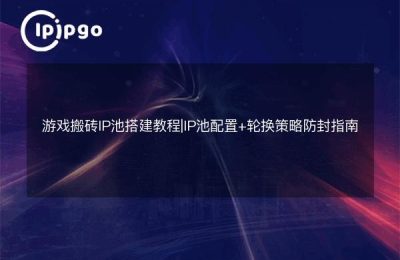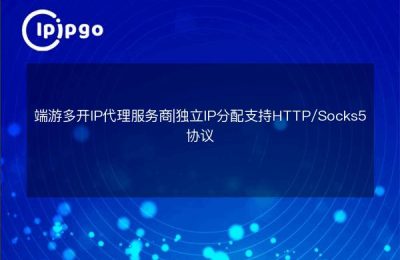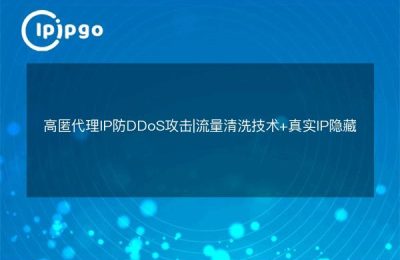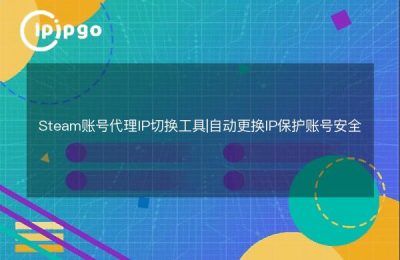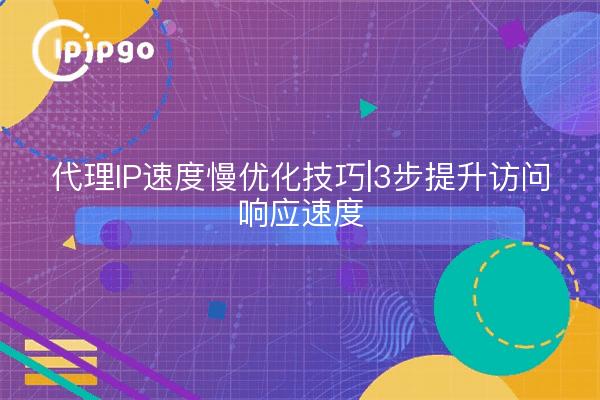
Proxy IP slow? Look at these 3 key points first
Many people think that slow proxy IP is a network problem, in factProxy server location, protocol type, IP qualityThese three factors are the core. To cite a practical scenario: when you use the U.S. proxy to access the domestic website, the data to go halfway around the world, and then the good network will be stuck. At this time to choose the right service provider to provide the functional configuration, the speed can be doubled.
Step 1: pinpoint the location of the proxy server
It is a law of physics that distance determines delay. Via ipipgo'sGlobal node repository for 240+ countriesIt can accurately screen the nearest proxy node to the target server. For example, if your business needs to access a certain platform in Japan, you can directly choose the residential IP of Tokyo server room, and the latency can be controlled within 50ms.
Tip: Check the box in the backend of ipipgo"Filter by city"The function is more accurate than simply selecting a country. Measured data show that the agent nodes in different cities of the same country, the difference in response speed can be up to 200% or more.
Step 2: There is a gateway to agreement selection
The effect of different protocols on speed is often ignored:
| Protocol type | Applicable Scenarios | speed comparison |
|---|---|---|
| SOCKS5 | Video/File Transfer | Faster than HTTP 30% |
| HTTPS | web browser | Encryption takes more than 151 TP3T |
ipipgo supportAll-Protocol SwitchingThe actual speed of different protocols can be tested in real time in the background. There is a real case: a user to change the SOCKS5 protocol to HTTP, but the access speed increased by 40%, because the target site itself supports short connections.
Step 3: Flexible use of dynamic/static IPs
Many people don't know the difference in usage between these two IPs:
Dynamic Residential IPIt is more suitable for scenarios that require frequent switching, such as data collection, each request for a new IP instead of reducing the speed. At this time, it is better to switch toStatic Residential IPMaintain a long connection with speed stability improvement of 70% or more.
ipipgo's.Real-time IP type switching functionIt is very practical to set "Speed Priority Mode" in the background, the system will automatically allocate the lowest latency of the available IP. an e-commerce company with this feature, the API interface response time from 3 seconds to 0.8 seconds.
Frequently Asked Questions QA
Q: How to test the real speed of proxy IP?
A: Recommended by ipipgoNode Speed ToolIt is able to test the three indicators of latency, packet loss rate and bandwidth at the same time. Note that it should be tested during peak business hours for more accurate data.
Q: Do free proxies improve speed?
A: Measured data shows that the average response time of free proxies is 3-5 times that of professional services. ipipgo's90 million residential IP poolIt ensures that quality lines are assigned every time and avoids congestion problems for public agents.
Q: Will frequent IP changes affect the speed?
A: The key is IP quality. ipipgo'sDynamic IP PoolAdopting BGP intelligent routing, the optimal path is automatically selected each time the IP is switched, and the switching process is basically senseless.
Speed optimization is a systematic project, from node selection to protocol configuration all need professional tool support. As the world's leading proxy service provider, ipipgo encapsulates these complex technologies into simple and easy-to-use functional modules, making speed optimization a real reality.One click to take effect.. The next time you experience agent lag, check these three key settings first.

